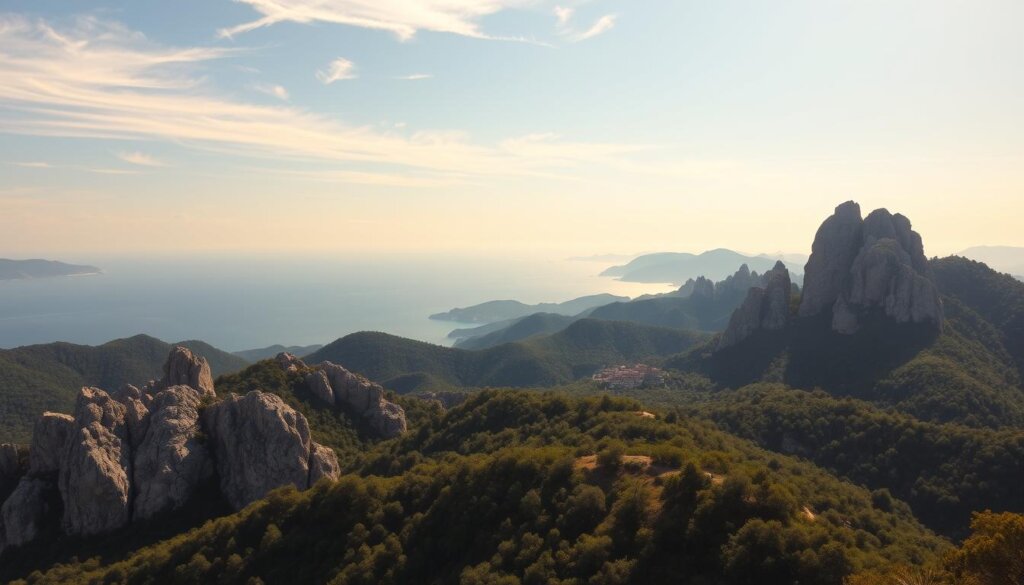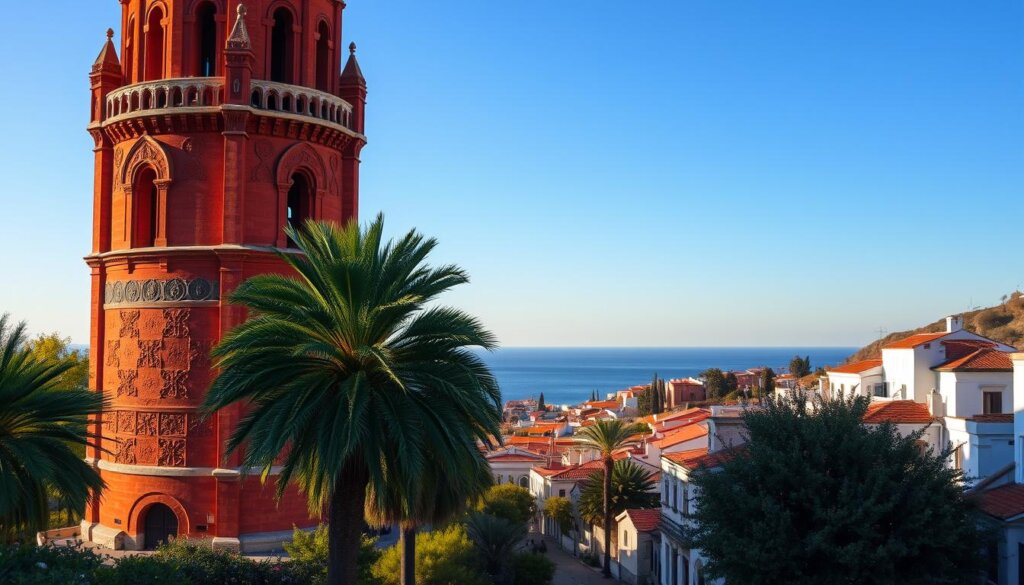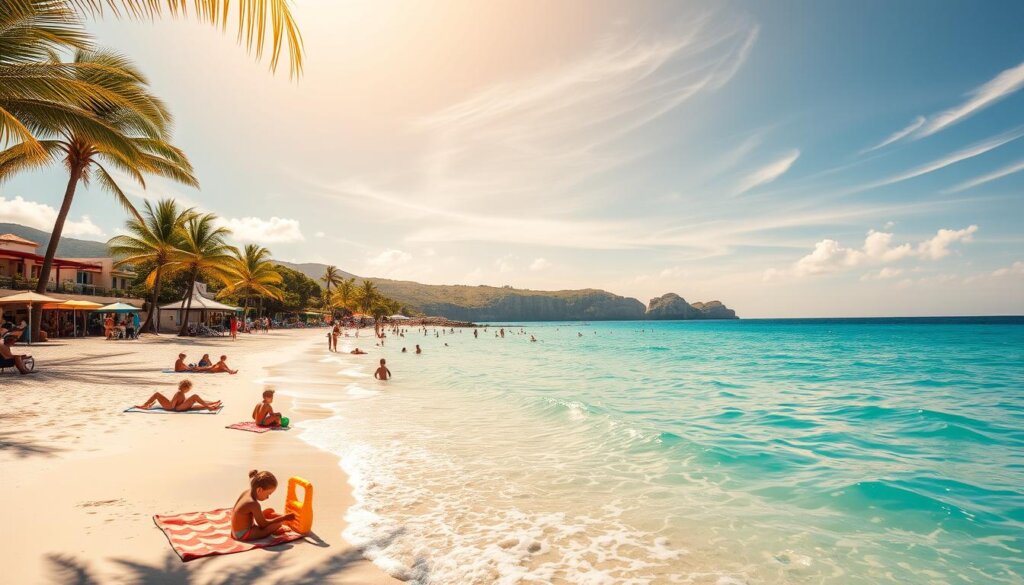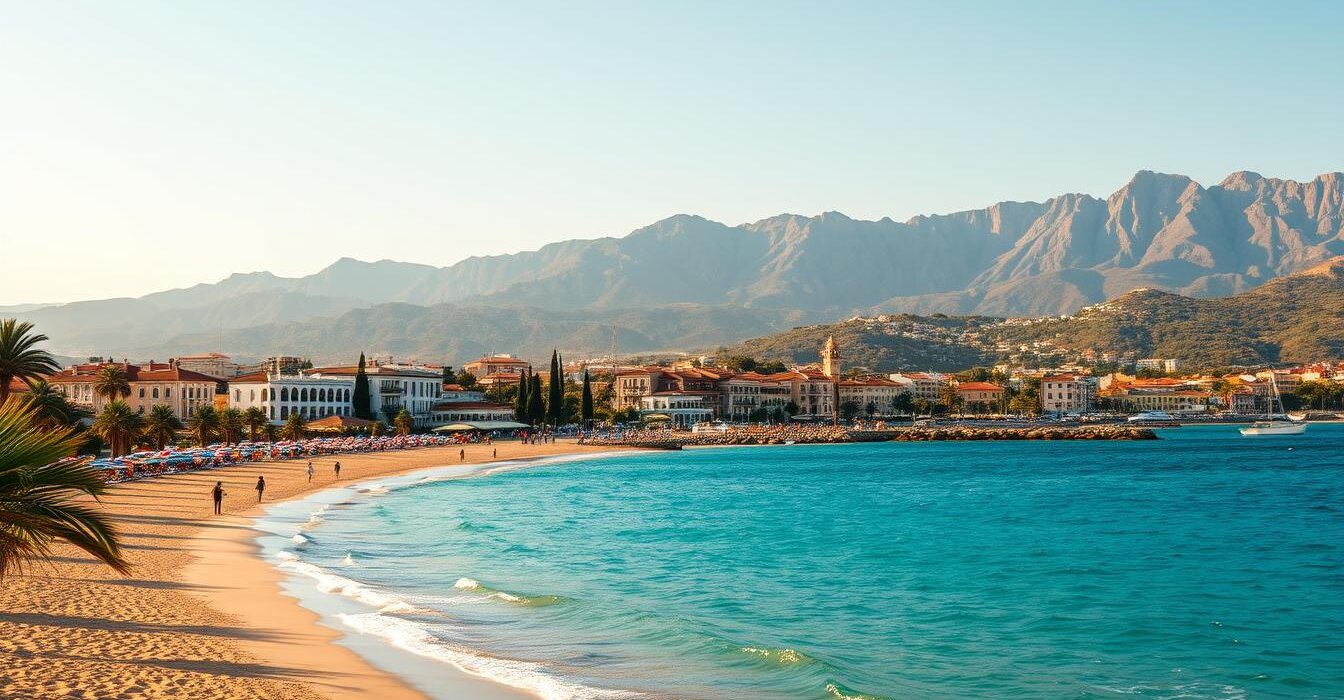Over 65% of British expats on the Turkish Riviera now prioritise smaller coastal towns over bustling cities for long-term stays. This shift reflects growing preferences for relaxed lifestyles blending Mediterranean charm with modern comforts – a balance I’ve helped clients achieve since 2006 through tailored property solutions.
Table Of Content
- Key Takeaways
- Exploring the Turkish Riviera: An Overview of Antalya and Alanya
- Geographical and Cultural Highlights
- Distinct Holiday Experiences and Climate
- Architectural Heritage and Historical Attractions
- Ancient Ruins, Museums and Iconic Landmarks
- From the Red Tower to Byzantine Charms
- Vibrant Beach Life, Leisure and Family Experiences
- Famous Beaches, Boat Trips and Water-Based Fun
- Resorts, Nightlife and Local Entertainment
- Is Alanya better than Antalya? A Detailed Comparison
- Property Investment and Lifestyle Realities
- Everyday Conveniences and Hidden Costs
- Conclusion
- FAQ
- Which city offers better property value for investors: Alanya or Antalya?
- Are family-friendly amenities more accessible in Alanya?
- How do summer climates compare between these destinations?
- Which city has stronger investment potential for citizenship buyers?
- Is transport connectivity better in Antalya?
- Which destination has more vibrant nightlife?
- Where can history enthusiasts find better-preserved ruins?
- Which city has superior beach facilities?
- Are day trips more varied from Alanya or Antalya?
- Which city has better resort amenities for long stays?
Both destinations in Antalya Province share crystalline waters and ancient heritage sites. However, their atmospheres differ remarkably. One offers metropolitan energy with 5-star hotels and shopping districts, while the other provides tranquil beachfront communities where neighbours greet each other by name.
Through 18 years of guiding international buyers, I’ve witnessed how Alanya’s slower pace attracts those seeking permanent residences. Its blend of affordable seafront properties and unspoiled natural beauty creates unique opportunities – whether for holiday homes or citizenship investments. My team at +90 532 577 87 67 specialises in navigating these options with local insight.
Key Takeaways
- Coastal towns on the Turkish Riviera offer distinct lifestyle advantages compared to urban centres
- Historical sites and natural landscapes feature prominently in both locations
- Property investment potential varies significantly between areas
- Local expertise proves crucial for navigating residency requirements
- Climate and community dynamics influence long-term satisfaction
Exploring the Turkish Riviera: An Overview of Antalya and Alanya
When clients ask me to describe Turkey’s southern coast, I always start with its geographical theatre – where sapphire waters meet rugged cliffs softened by citrus groves. This stretch reveals two faces of Mediterranean living: one pulsing with urban energy, the other whispering seaside serenity.

Geographical and Cultural Highlights
The Taurus Mountains form a dramatic backdrop, their snow-dusted peaks visible from beachfront promenades. In Antalya’s old town, Roman-era Hadrian’s Gate stands metres from trendy cafes – a living archaeological museum without walls. Alanya counters with its own ancient ruins, where Seljuk-era shipyards still echo with maritime history.
“You haven’t truly seen Turkey until you’ve watched the sunset from Hidirlik Tower – it’s where empires literally overlap.”
Distinct Holiday Experiences and Climate
Antalya city thrives as a transport hub, its modern airport connecting visitors to:
- Byzantine-era churches in the morning
- Luxury boutiques by afternoon
- Mountain villages by evening
Meanwhile, coastal towns outside city centres offer slower rhythms. The climate shares 300 sunny days yearly, but microclimates vary:
| Feature | Urban Centre | Coastal Town |
|---|---|---|
| Summer highs | 34°C (busy streets) | 31°C (sea breezes) |
| Winter atmosphere | Cosmopolitan buzz | Quiet fishing harbours |
| Nature access | 1-hour mountain drives | Beachfront paths |
Families appreciate Antalya’s child-friendly museums, while solo travellers often prefer cliffside yoga sessions above Alanya’s beaches. Both destinations share that Turkish magic – serving fresh pomegranate juice where Roman emperors once walked.
Architectural Heritage and Historical Attractions
In my 18 years guiding property buyers along this coast, I’ve found history isn’t just preserved here – it’s woven into daily life. Clients often marvel at how ancient structures serve modern purposes, from converted Byzantine cisterns to Ottoman-era markets still buzzing with traders.

Ancient Ruins, Museums and Iconic Landmarks
The 13th-century Alanya Castle perfectly illustrates this blend. Its 6.5km walls enclose both Seljuk-era mosques and cosy tea gardens where locals play backgammon. Down in the harbour, the Red Tower stands guard as it has since 1226 – its octagonal design still impresses naval engineers today.
Antalya counters with the Yivli Minare Mosque, a 13th-century marvel sporting six fluted domes. Nearby, the Antalya Museum displays Roman statues so lifelike you’ll check for pulse points. “These aren’t just artefacts,” a curator once told me, “they’re conversations across 30 generations.”
From the Red Tower to Byzantine Charms
Architectural styles here tell competing stories. Alanya’s shipyard ruins showcase Seljuk maritime ambition, while Antalya’s Kesik Minare reveals Byzantine foundations beneath Ottoman repairs. Both cities protect their past fiercely – restoration projects often use original techniques and materials.
For history enthusiasts, these sites offer more than photo ops. Walking Alanya’s castle ramparts at sunset or tracing Antalya’s Hellenistic theatre acoustics creates visceral connections to vanished worlds. It’s this tangible legacy that transforms visitors into long-term residents – they’re not just buying property, but becoming part of the narrative.
Vibrant Beach Life, Leisure and Family Experiences
I’ve lost count of how many clients changed their property preferences after experiencing Turkey’s coastal playgrounds first-hand. The moment feet touch warm sand or a child’s laughter echoes across a sheltered bay, priorities often shift towards creating lasting holiday memories.
Famous Beaches, Boat Trips and Water-Based Fun
Cleopatra Beach remains my top recommendation for families – its golden sands slope gently into shallow turquoise waters, perfect for toddlers paddling safely. Antalya’s Konyaaltı Beach offers a different charm with its pebbled shoreline and dramatic mountain backdrop, favoured by sunset joggers.

Both locations excel in water activities. Weekly boat trips departing from Alanya’s harbour reveal hidden coves only accessible by sea, while Antalya’s adrenaline seekers can try parasailing above yacht-filled marinas. For quieter moments, I often suggest:
- Snorkelling tours around ancient shipwrecks
- Stand-up paddleboarding at dawn
- Private gulet cruises with onboard BBQs
Resorts, Nightlife and Local Entertainment
Coastal resorts cater to diverse tastes. Alanya’s family-oriented complexes feature kids’ clubs and shallow pools, whereas Antalya’s larger hotels attract groups with DJ-led pool parties. Evening options split similarly – think beachfront bars serving fresh meze in one location, rooftop cocktail lounges in the other.
My property clients particularly appreciate how Alanya’s restaurants blend child-friendly menus with authentic Turkish flavours. As one recent buyer noted: “We wanted proper gözleme pancakes, not just chicken nuggets – here, our twins eat what locals eat.”
Both destinations deliver that magical vacation feeling, but through different lenses. Whether it’s building sandcastles or dancing under stars, Turkey’s coast provides the perfect backdrop.
Is Alanya better than Antalya? A Detailed Comparison
Having helped 300+ clients settle along this coast since 2006, I’ve learned property decisions hinge on subtle differences. Let’s break down key factors through the lens of daily life and investment potential.
Property Investment and Lifestyle Realities
Alanya’s property market offers 20-30% lower entry prices than central Antalya, with seafront flats starting at £85,000. Capital growth here averages 7% annually – slightly higher than Antalya’s 5.5%. But location matters: central Antalya apartments near tram lines command premium rents (£1,200/month vs £800 in Alanya).
Lifestyle contrasts shape these figures. Alanya’s quieter winters suit retirees, while Antalya’s year-round events attract younger professionals. Weekly markets here feel communal; there, mega-malls dominate. Both have merits – it’s about matching rhythms to personal priorities.
Everyday Conveniences and Hidden Costs
Antalya International Airport sits 12km from the city centre (25-minute drive), while Gazipaşa Airport serves Alanya from 45km away (50 minutes). This affects both holiday lets and residency runs:
| Factor | Antalya City | Alanya |
|---|---|---|
| Supermarket density | 1 per 2,000 residents | 1 per 3,500 |
| Public transport frequency | Every 8 minutes | Every 15-20 minutes |
| Average restaurant meal | £12 | £9 |
Seasonality plays bigger role in coastal towns. Last November, an Alanya client saved 40% on renovation costs compared to peak summer rates – a smart move for investors. These practical nuances often tip the scales for buyers choosing between two brilliant options.
Conclusion
Choosing between these coastal gems ultimately depends on what you value most in Mediterranean living. For those prioritising vibrant city energy with quick airport access, one destination shines. If tranquil town vibes and affordable coastal property options matter more, the alternative delivers.
Both locations offer unique advantages. Historic ruins and modern amenities coexist seamlessly across the region. Boat trips along turquoise coasts or leisurely days exploring local markets create unforgettable vacation memories.
From an investment perspective, consider your timeline. Capital growth potential balances against lifestyle preferences – lively bars versus quiet beach walks. In my 18 years here, I’ve seen clients thrive in both places when they match their choice to daily rhythms rather than fleeting trends.
Whether you’re drawn to cultural cities or relaxed coastal towns, Turkey’s southern coast caters to diverse needs. My advice? Spend time in both areas before deciding. Sometimes the best things reveal themselves when you’re sipping çay by ancient harbour walls or negotiating spice-scented bazaars.
FAQ
Which city offers better property value for investors: Alanya or Antalya?
Alanya typically provides more affordable options, with average prices around £1,100-£1,400/m² for coastal properties. Antalya’s city centre averages £1,800-£2,200/m², though both cities offer strong rental yields (4-7% annually) due to their Turkish Riviera locations.
Are family-friendly amenities more accessible in Alanya?
Yes – Alanya’s compact layout means beaches like Cleopatra and key attractions (Alanya Castle, Dimçay River) are within 15-20 minutes’ drive. Many resorts here include kids’ clubs and shallow-water zones, unlike Antalya’s more spread-out urban beaches.
How do summer climates compare between these destinations?
Alanya enjoys 300+ sunny days yearly with average August temperatures of 34°C, while Antalya averages 31°C but has higher humidity. Both sit along the Mediterranean, but Alanya’s position east of the Taurus Mountains creates drier heat.
Which city has stronger investment potential for citizenship buyers?
Alanya’s 18% annual tourism growth (2023 stats) drives demand for holiday rentals. For citizenship via property (£200k minimum), Antalya offers more luxury developments, while Alanya’s Mahmutlar district provides budget-friendly options near archaeological sites.
Is transport connectivity better in Antalya?
Antalya Airport serves 30+ international routes, but Alanya’s 90-minute transfer beats Antalya City’s 45-minute airport commute for most resorts. The D400 highway links both cities – a 2.5-hour scenic drive along the coastline.
Which destination has more vibrant nightlife?
Antalya’s Kaleiçi district boasts 100+ bars and clubs, while Alanya focuses on relaxed seafront meyhanes. For late-night entertainment, Antalya’s Konyaaltı Beach area outperforms Alanya’s smaller-scale venues.
Where can history enthusiasts find better-preserved ruins?
Antalya’s Old Town features Hadrian’s Gate (130 AD) and the Yivli Minare, while Alanya’s Red Tower (13th century) and shipyard showcase Seljuk maritime history. Both cities access ancient sites like Perge and Side within 1 hour’s drive.
Which city has superior beach facilities?
Alanya’s Cleopatra Beach (2km Blue Flag stretch) offers free public areas with showers and cafes. Antalya’s Konyaaltı Beach (7km) has paid loungers but fewer shaded zones. Both provide water sports, though Alanya’s smaller bays suit families better.
Are day trips more varied from Alanya or Antalya?
From Alanya, you can reach Anamur’s Byzantine ruins (2 hours) or Sapadere Canyon. Antalya offers closer access to Termessos (40 minutes) and Düden Waterfalls. Boat trips to Phaselis Island depart daily from both harbours.
Which city has better resort amenities for long stays?
Alanya’s 80% of resorts include full kitchens – ideal for seasonal residents. Antalya’s larger all-inclusive complexes (particularly in Belek) cater better to short-term stays. Both provide international schools and medical facilities meeting expat needs.







No Comment! Be the first one.